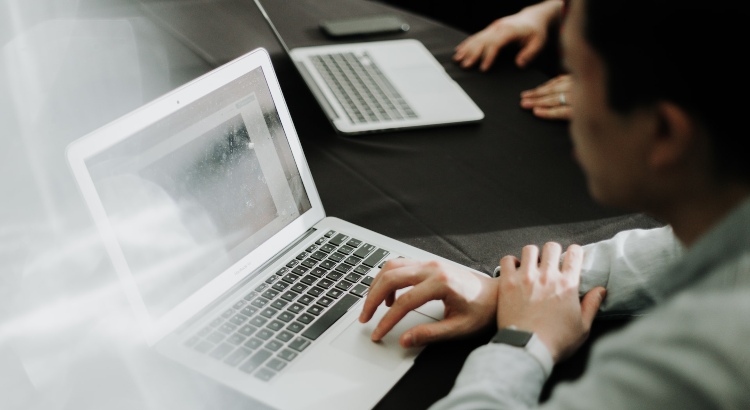How to Make an Audio Recording Clearer: A Step-by-Step Guide
Recording clear audio is crucial for journalists, researchers, podcast creators, and anyone who conducts interviews or group discussions. Clear audio ensures you do not miss essential information and prevents inaccuracies in transcriptions or quotes. In this guide, you’ll learn practical steps to improve your audio recording quality.
Choosing the Right Recording Equipment
The foundation of a clear recording is the right equipment. Even simple improvements to your setup can make a big difference.
- Digital Recording Device: Laptops and smartphones can work if you’re on a budget, but a dedicated digital recorder often delivers better quality.
- External Microphone: Every speaker should have a microphone, if possible. External mics capture voices more clearly than built-in ones.
- Headphone Splitter: This device lets you connect multiple microphones to a single recorder.
Connecting everyone’s microphone to a splitter helps capture all voices equally. If you have more than two speakers, a splitter with several inputs is ideal. This setup lets your recorder capture all audio streams at once.
How to Choose the Best Microphone
Different situations call for different types of microphones. Here are the main options:
- Lavalier Microphone: Small and clipped to clothing, lavaliers are great for interviews or group discussions with multiple speakers.
- Shotgun Microphone: Best for single-speaker situations where the person stays in the same place, such as podcasts.
- Handheld Microphone: Good if only one person speaks at a time, or you want to pass the mic between speakers.
Dynamic microphones are effective at reducing background noise because they pick up sound only from a narrow range around the speaker.
Setting Your Recording Levels
Recording at the correct volume is vital for clarity. If you speak too loudly, the audio may distort. Too softly, and your voice may not get picked up.
- Ideal speaking volume is around -10dB to -20dB.
- Avoid rising above -6dB, as this often leads to distortion and hard-to-understand speech.
Free programs like Audacity help you monitor recording levels. Test your setup before you start to find the best volume. Running volume tests ensures balanced, clear results.
Optimal Microphone Placement
The way you place your microphone affects recording clarity.
- Keep the mic 6 to 12 inches from the speaker’s mouth.
- Position it just below the chin for the best sound projection.
- Clip-on mics should avoid brushing against clothing to prevent rustling sounds.
Tests show that close mic placement (without being too close) leads to improved clarity (Audio Engineering Society, 2019).
Tips for Ensuring a Clear Speaking Voice
Clear audio isn’t just about the equipment—you must also focus on how you speak.
Warm Up Your Voice
- Read your script out loud before you start to naturally find the right volume and tone.
Maintain Good Posture
- Sitting or standing straight helps control your breath for a strong, steady voice.
Stay Hydrated
- Keep water or a warm drink nearby to prevent mouth noises.
Enunciate Clearly
- Pronounce vowels and consonants distinctly; don’t rush through your words.
Review the Script in Advance
- Practice reading your questions or script to find tricky sections. Mark pauses or changes in tone for clarity.
Writing notes on your script can help you remember where to pause or emphasize a point, making your speech sound more natural.
How to Minimize Background Noise
Background noise is a common problem, but you can take steps to reduce it:
- Use a dynamic microphone, which is less sensitive to distant sounds.
- Add an acoustic screen in front of your mic to block out lower-level background noises.
- Ask participants to avoid chewing, eating, or having side conversations during the session.
- Turn off noisy electronics or move them out of the room.
Research shows that using dynamic microphones reduces background noise by up to 30% compared to condenser mics (SoundGuys, 2023).
Choosing the Ideal Recording Location
Your recording setting can help or harm audio quality. For the best results:
- Select a quiet, isolated room with soft furnishings and carpet.
- Hang curtains or lay down rugs to absorb echo.
- Avoid rooms near busy streets, HVAC systems, or other noise sources.
If you have limited control over the location, bringing portable sound-absorbing panels can also help.
Dealing with Audio Static
Audio static can ruin an otherwise clear recording. Here’s how to fix it:
- Check all cable connections to ensure nothing is loose.
- Verify that all mics are plugged into the correct input jacks.
- Test different equipment if static persists—sometimes cables or microphones are faulty.
A quick equipment check before the interview helps catch most static problems in advance.
Supporting Your Clear Recordings
Capturing clear audio is essential, but having accurate records is just as important. After recording, consider converting your files into text.
Professional transcription services ensure you have accurate, searchable copies of every interview or session.
- Transcripts make it easy to review key points.
- Clear audio results in faster, more precise transcriptions.
For affordable options, see GoTranscript’s
transcription pricing page.
Conclusion: Clear Audio and Reliable Transcription
Learning how to make an audio recording clearer takes planning and practice, from using the right equipment to speaking carefully and choosing a quiet location. Reducing background noise and static can make a big difference. Once you have a clean recording, trusted services like
GoTranscript can turn your audio into accurate, readable transcripts. GoTranscript also offers advanced
automated transcription,
closed captioning, and
subtitling services to support your audio needs from start to finish.





 English
English
 Español
Español
 Português
Português
 Svenska
Svenska
 Français
Français














 Verified Order
Verified Order